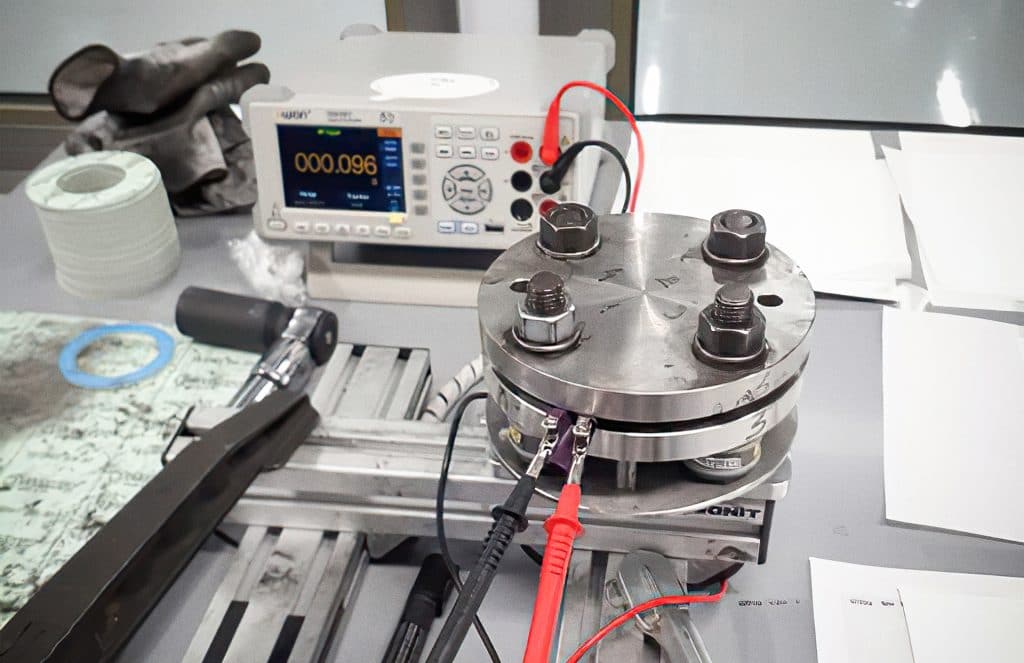Smarter sealing for a safer tomorrow – Obtaining information of a gasket
Smart gaskets you say? Probably just far-fetched slide-ware that will never come to life… Except that we at TT Gaskets are ready to make them real.
This modified abstract you are reading, and the paper in progress will potentially be published in the 2022 CIMAC congress in Busan, South Korea. The paper presents different technologies suitable for obtaining information of a gasket and its condition. These are used for identifying the gasket both before and after it has been installed to make sure the right gasket is used. The sensor structures presented provide information of the surface stress to ensure proper installing as well as monitor the condition of the gasket during operation.
More than necessary evil and tricky to install
Gaskets are often overlooked during the design and use of a machine or a process. They are considered as necessary evil even though they are essential in the functionality and safety of an application. The classic but tragic example of the cruciality of a seal is the Challenger disaster from 1986 which was caused by a faulty O-ring.
Failures in the installation cause a major part of sealing issues. Minor part is caused by choosing the wrong gasket or forgetting to use one at all. Most issues are caused by improper installing, meaning under- or overtightening the bolts that create insufficient, too high, or uneven surface stress on the gasket. The lack of lubrication on the bolts affects the surface stress as overcoming friction reduces the stress transmitted on the gasket. Different chemicals left or applied on the flange or gasket surface may also cause premature failure of a gasket.
No major breakthroughs have yet been made to ensure the success of installing of a gasket. Different methods to measure the bolt torque are readily available on the market, but they have the deficiency that correct torque does not mean the surface stress is sufficient. As mentioned earlier, friction affects the achieved stress majorly.

Successful and progressing R&D
TT Gaskets is currently researching and developing different methods and technologies to identify gaskets and measure their surface stress both during installing and use. The first nearly market-ready prototype of a tag suitable for identifying installed gaskets was released in autumn 2019. In late 2019 began the feasibility study of a single-use surface stress sensor.
Designing and prototyping of the sensor started in spring 2020 and has continued ever since. Potentially, the first functional prototypes will be available in late 2021. In early 2021 began the feasibility study of a continuously monitoring sensor and the prototype development will start in autumn 2021 continuing towards 2022.
Novel technology put to use
Due to the trade secrets considering this topic, the details are not covered. The idea is to create a structure that conducts when the surface stress is sufficient. The structure is connected to the remotely readable tag that triggers when the sensor conducts. The status of the sensor can be checked immediately after the installation procedure.
The continuously monitoring sensor is created using a different type of structure and technology that is capable of continuous monitoring. After the feasibility study, we found a potential technology that will be researched further and developed into a functioning prototype. At first, the structure harvests energy from remote reader signal when the user checks the flange, but in the future, the sensors will form a self-contained network of readers and data hubs that monitor the application or facility continuously.
This so-called Internet of Gaskets (IoG) creates major benefits and potential for both the customer and TT Gaskets. A fully functioning IoG could revolutionize our business model and allow us to create Gaskets as a Service (GaaS) model for our customers. We are truly excited about the future as we move towards smarter sealing for a safer tomorrow.
